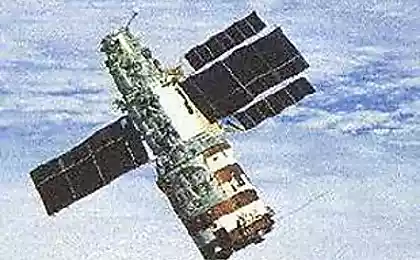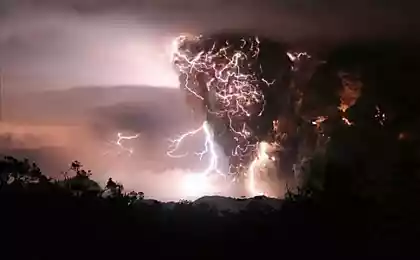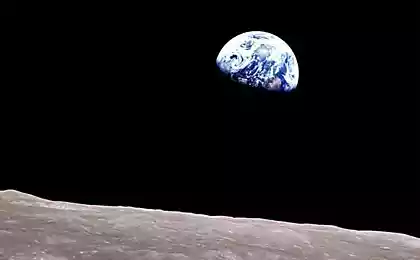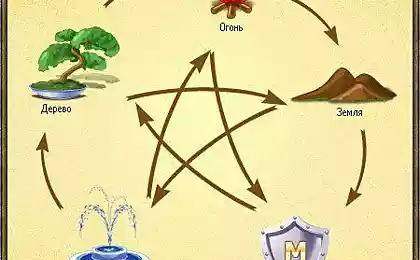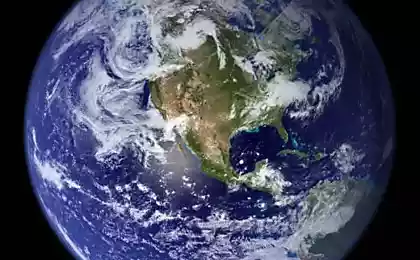665
Like Earth, only bigger
Astronomers have discovered the first potentially habitable planet outside the solar system. The discovery is believed that such a planet is much more common in the universe than previously thought.
"Detected a potentially habitable planet." "The new discovered planet may be habitable exoplanet really." These sensational headlines on Thursday will meet anyone who wants to read the news. The reason for these titles gives the work of American "Hunters exoplanets" (recall that called exoplanets planets orbiting other stars, and not around the Sun), accepted for publication in Astrophysical Journal. In America and held a special press briefing dedicated to such an important scientific discovery.
It passed just a couple of weeks from the date when the public got acquainted with the work of the sociologist Samuel Arbesmana and astronomer Gregory Laughlin, who, using scientometric methods tried to predict when scientists discover the first exoplanet that is suitable for life. According to their forecast, with a 50% chance it was going to happen in May next year.
But the first such discovery happened much earlier.
Its authors were scientists from the University of California at Santa Cruz and the Carnegie Institution of Washington. The red dwarf Gliese 581, which, when viewed from the Earth, located in the constellation of Libra at a distance of 20 light-years 5, has long attracted the attention of "exoplanets hunters." It is known that among the identified at the moment the majority of exoplanets are very massive and like "our" Jupiter. This is because such a large and massive planet simply easier to detect. In April last year in the Gliese 581 planet was found, which was at that time the lightest known extrasolar planets orbiting stars similar to the Sun in the parameters. Planet Gliese 581e (fourth in the system) was the only 1, 9 times more massive than Earth. This planet revolved around its star in just 3 (Earth) days and 4 hours. Due to the fact that she had such a "little" mass and it is located very close to its central star, scientists have suggested that it should be rocky (like Earth), not the gas (as Jupiter, as such it planet instantly be destroyed).
[next]
Now, scientists report the discovery of two more planets in this star system. Most interesting is the open sixth planet - Gliese 581g.
It was her first astronomers call actually habitable. And they have for this reason.
Using his data and archival telescope named Keck, which is in Hawaii, researchers have made assessment of a number of parameters of this planet, and concluded that there may be an atmosphere and water to exist in liquid form. For example, scientists have found that this planet has a radius of 1, 2 and 1, 5 Earth's radius, weight from 3, 1 to 4, 3 mass of the Earth and the period of revolution around its star in 36, 6 Earth days. Semi-major axis of the elliptical orbit of the planet is about 0, 146 astronomical units (1 astronomical unit - the average distance between Earth and the Sun, which is approximately equal to 146, 9 million km). Acceleration of gravity on the surface of the planet more than this to the Earth in 1, 1-1, 7 times.
As for the temperature on the surface of Gliese 581g, it is, according to scientists, ranging from -31 to -12 degrees Celsius.
And though a simple layman, this range can not be called otherwise than a frosty, life on Earth exists in a much broader range of -70 to Antarctica to 113 degrees Celsius in the geothermal sources where microorganisms live.
As the planet is close enough to its star, there is a strong likelihood that Gliese 581g due to the tidal forces of all time, turned to his heavenly body on one side, just as the moon always "looks" to the Earth only one of its hemisphere.
The fact that less than 20 years, astronomers have gone from the discovery of the first planets around other stars to a potentially habitable planets, indicates, according to the authors of the sensational work that these planets there is much more than previously thought
And even our Milky Way galaxy may be teeming potentially habitable planets.
According to Vogt, the planet has been very difficult to detect. "This required more than 200 measurements with an accuracy of measurement, for example, the rate of 1, 6 meters per second," - said the scientist.
"Our results are very convincing arguments in favor of the fact that we found a planet where life could exist - said Steven Vogt, professor of astronomy and astrophysics at UC Santa Cruz, one of the authors. - The fact that we were able to detect this planet so quickly and so nearby tells us that planets are very common. If such planets are rare, we could not find it so quickly and so close. "
According to the authors of this work, 10-20 percent of stars have planets that could be habitable.
Because in our galaxy are hundreds of billions of stars, Vogt and colleagues conclude that tens of billions of them have potentially habitable planets. Confirm this can only further the search for exoplanets.
Source.
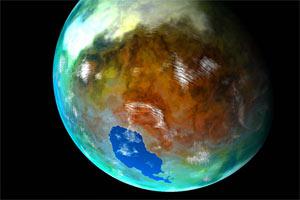
Source:
"Detected a potentially habitable planet." "The new discovered planet may be habitable exoplanet really." These sensational headlines on Thursday will meet anyone who wants to read the news. The reason for these titles gives the work of American "Hunters exoplanets" (recall that called exoplanets planets orbiting other stars, and not around the Sun), accepted for publication in Astrophysical Journal. In America and held a special press briefing dedicated to such an important scientific discovery.
It passed just a couple of weeks from the date when the public got acquainted with the work of the sociologist Samuel Arbesmana and astronomer Gregory Laughlin, who, using scientometric methods tried to predict when scientists discover the first exoplanet that is suitable for life. According to their forecast, with a 50% chance it was going to happen in May next year.
But the first such discovery happened much earlier.
Its authors were scientists from the University of California at Santa Cruz and the Carnegie Institution of Washington. The red dwarf Gliese 581, which, when viewed from the Earth, located in the constellation of Libra at a distance of 20 light-years 5, has long attracted the attention of "exoplanets hunters." It is known that among the identified at the moment the majority of exoplanets are very massive and like "our" Jupiter. This is because such a large and massive planet simply easier to detect. In April last year in the Gliese 581 planet was found, which was at that time the lightest known extrasolar planets orbiting stars similar to the Sun in the parameters. Planet Gliese 581e (fourth in the system) was the only 1, 9 times more massive than Earth. This planet revolved around its star in just 3 (Earth) days and 4 hours. Due to the fact that she had such a "little" mass and it is located very close to its central star, scientists have suggested that it should be rocky (like Earth), not the gas (as Jupiter, as such it planet instantly be destroyed).
[next]
Now, scientists report the discovery of two more planets in this star system. Most interesting is the open sixth planet - Gliese 581g.
It was her first astronomers call actually habitable. And they have for this reason.
Using his data and archival telescope named Keck, which is in Hawaii, researchers have made assessment of a number of parameters of this planet, and concluded that there may be an atmosphere and water to exist in liquid form. For example, scientists have found that this planet has a radius of 1, 2 and 1, 5 Earth's radius, weight from 3, 1 to 4, 3 mass of the Earth and the period of revolution around its star in 36, 6 Earth days. Semi-major axis of the elliptical orbit of the planet is about 0, 146 astronomical units (1 astronomical unit - the average distance between Earth and the Sun, which is approximately equal to 146, 9 million km). Acceleration of gravity on the surface of the planet more than this to the Earth in 1, 1-1, 7 times.
As for the temperature on the surface of Gliese 581g, it is, according to scientists, ranging from -31 to -12 degrees Celsius.
And though a simple layman, this range can not be called otherwise than a frosty, life on Earth exists in a much broader range of -70 to Antarctica to 113 degrees Celsius in the geothermal sources where microorganisms live.
As the planet is close enough to its star, there is a strong likelihood that Gliese 581g due to the tidal forces of all time, turned to his heavenly body on one side, just as the moon always "looks" to the Earth only one of its hemisphere.
The fact that less than 20 years, astronomers have gone from the discovery of the first planets around other stars to a potentially habitable planets, indicates, according to the authors of the sensational work that these planets there is much more than previously thought
And even our Milky Way galaxy may be teeming potentially habitable planets.
According to Vogt, the planet has been very difficult to detect. "This required more than 200 measurements with an accuracy of measurement, for example, the rate of 1, 6 meters per second," - said the scientist.
"Our results are very convincing arguments in favor of the fact that we found a planet where life could exist - said Steven Vogt, professor of astronomy and astrophysics at UC Santa Cruz, one of the authors. - The fact that we were able to detect this planet so quickly and so nearby tells us that planets are very common. If such planets are rare, we could not find it so quickly and so close. "
According to the authors of this work, 10-20 percent of stars have planets that could be habitable.
Because in our galaxy are hundreds of billions of stars, Vogt and colleagues conclude that tens of billions of them have potentially habitable planets. Confirm this can only further the search for exoplanets.
Source.

Source:

